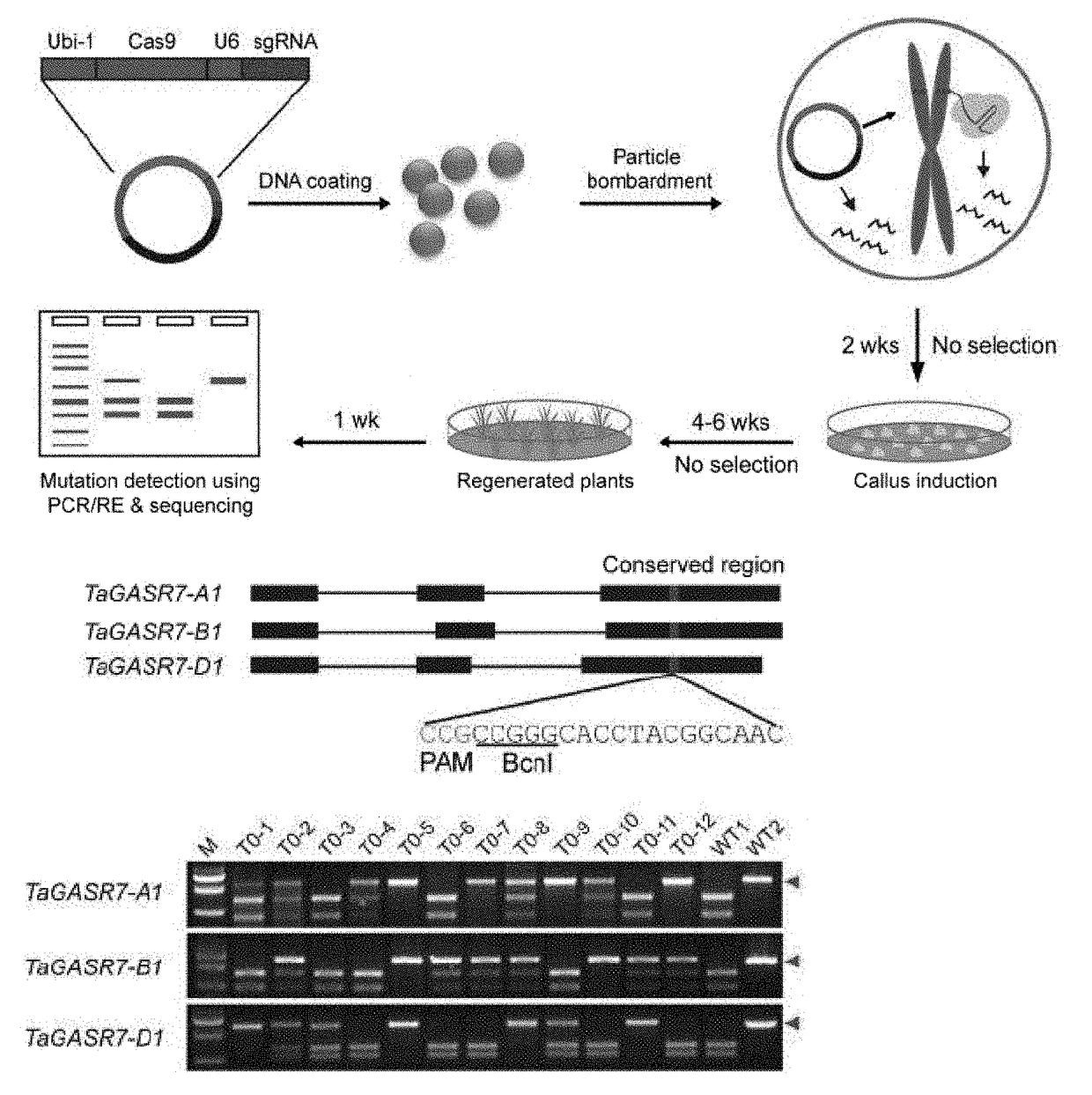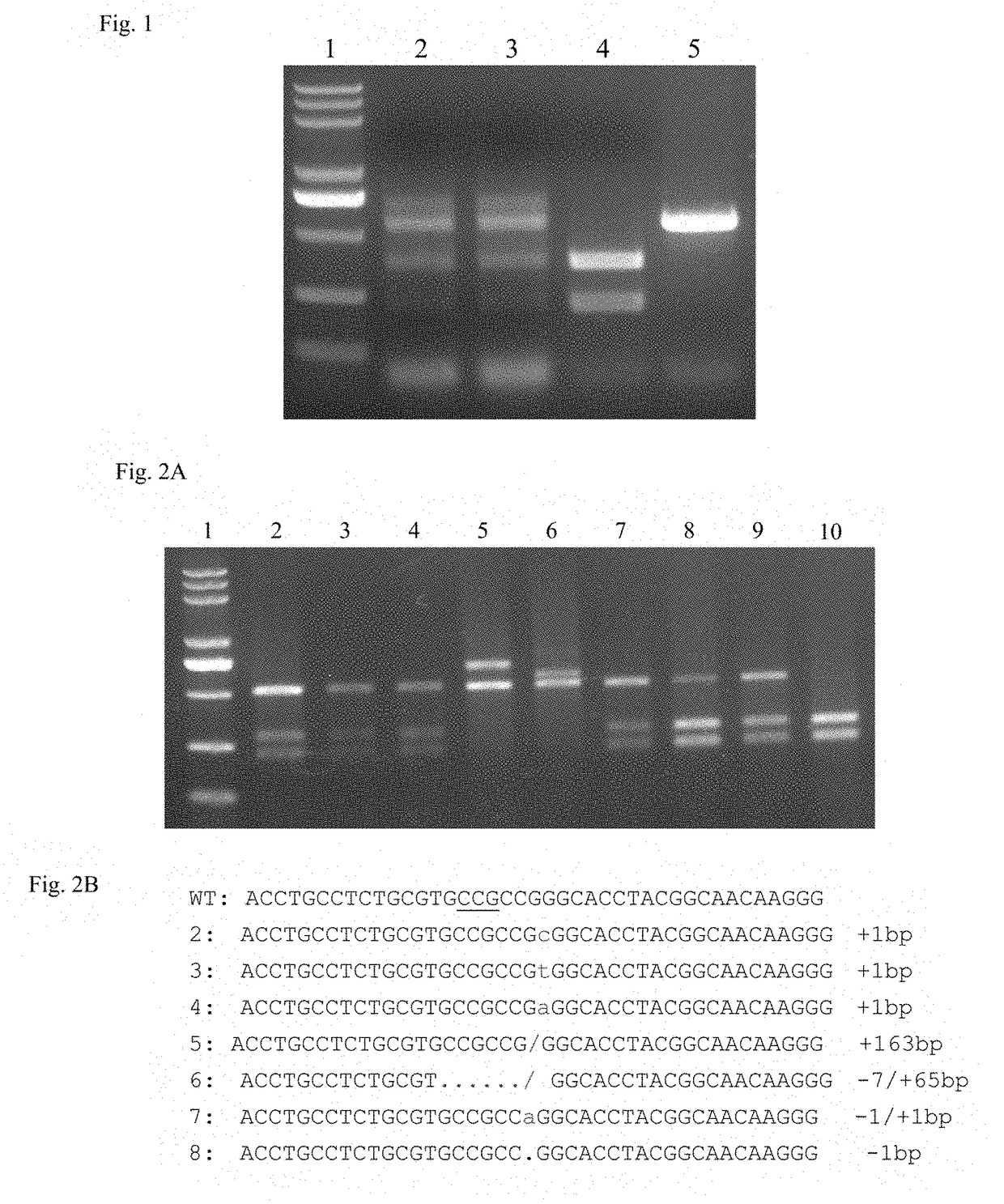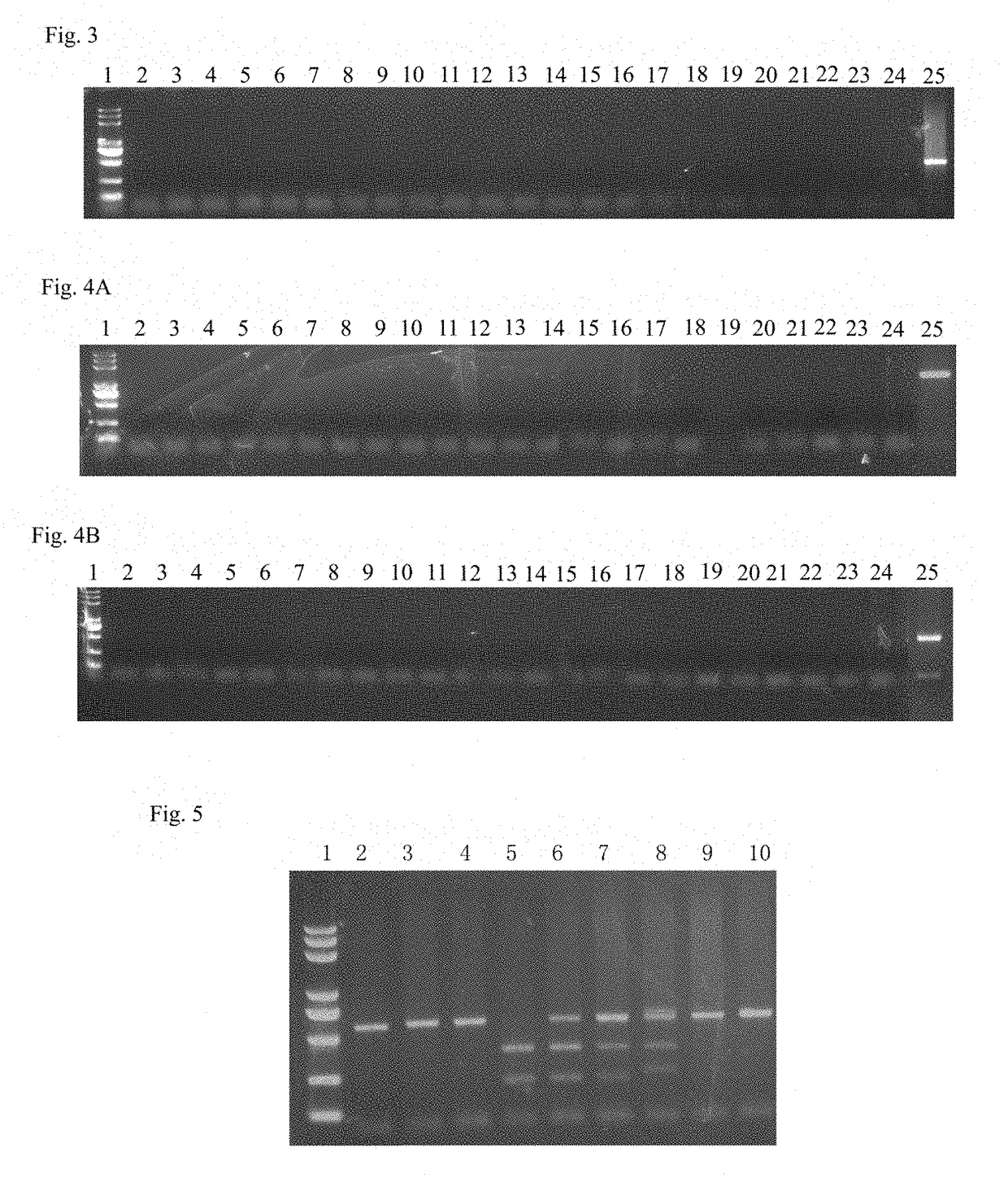A method for precise modification of plant via transient gene expression
a technology of transient gene expression and plant, applied in the field of plant genetic engineering, can solve the problems of time-consuming and excessive work, difficult identification of mutated sites, and low efficiency of traditional gene targeting methods, and achieve the effects of increasing the regeneration ability of plants, stably transmitted, and high bio-safety
- Summary
- Abstract
- Description
- Claims
- Application Information
AI Technical Summary
Benefits of technology
Problems solved by technology
Method used
Image
Examples
example 1
Expressing CRISPR / Cas9 Nuclease by Particle Bombardment to Obtain a Transgene-Free Tagasr Mutant
[0066]I. Design of the target site: target-C5
[0067]Target-C5: 5′-CCGCCGGGCACCTACGGCAAC-3; (in the TaGASR7 gene as shown in Genbank No. EU095332, positions 248-268)
[0068]II. Preparation of pTaU6-gRNA plasmid containing C5 site
[0069]C5 is the DNA sequence for the RNA that can complementarily bind to target-C5.
[0070]The following single-stranded oligonucleotides with sticky ends (underlined) were synthesized:
C5F:5′-CTTGTTGCCGTAGGTGCCCGG-3′;C5R:5′-AAACCCGGGCACCTACGGCAA-3′.
[0071]Double-stranded DNA with sticky ends was formed through oligonucleotides annealing process, and inserted between the two BbsI restriction sites in pTaU6-gRNA plasmid, resulting in pTaU6-gRNA plasmid containing C5 site. The positive plasmid was verified by sequencing. A recombinant plasmid, which was obtained by inserting the DNA fragment as shown in 5′-CTTGTTGCCGTAGGTGCCCGG-3′ in forward direction at the BbsI restricti...
example 2
Expressing TALEN Nuclease by Particle Bombardment to Obtain Inheritable and Transgene-Free Tamlo Mutant
[0108]I. Using Particle Bombardment to Transient Delivery T-MLO Vector to Perform Site-Specific Editing of Wheat MLO Gene
[0109]TELEN plasmid is the T-MLO vector, which can express paired TALEN proteins, and the TALEN protein is composed of a DNA binding domain capable of recognizing and binding to the target site, and a Fok I domain. The target sites are:
[0110]The underlined portion is the recognition sequence of restriction endonuclease AvaII.
[0111](1) Immature embryo of the wheat variety Bobwhite was taken and hypertonically treated for 4 hours using hypertonic medium;
[0112](2) A particle bombardment device was used to bombard the wheat immature embryo that was hypertonically cultured in step (1), and T-MLO vector was introduced into the wheat immature embryo cells; the bombarding distance for each bombardment was 6 cm, the bombarding pressure was 1100 psi, the bombarding diamete...
example 3
erification of the Transient Expression-Based Gene Editing Approach
[0126]The genome editing approach of the invention was further tested using five different wheat genes as targets.
[0127]First, three homoeologs of TaGASR7 (TaGASR7 A1, TaGASR7-R1 and TaGASR7 D1), which are known as involved in determining grain length and weight1, were edited. The three homeologs each have three exons and two introns (FIG. 9B). sgRNAs that target exon 3 were designed because this exon is highly conserved. After initial testing of nuclease activity in protoplasts2, the most effective sgRNA expression cassette (Table 5) was combined with Cas9 in a single construct (pGE-TaGASR7, FIG. 9D). This was introduced by particle bombardment into immature embryos of two common wheat varieties (Bobwhite and Kenong199). Embryogenic calli developed in 2 weeks, and a large number of seedlings (2-3 cm high) were regenerated from the calli in 4-6 weeks. In contrast with most plant genome editing experiments, no herbici...
PUM
| Property | Measurement | Unit |
|---|---|---|
| Volume | aaaaa | aaaaa |
| Volume | aaaaa | aaaaa |
| Volume | aaaaa | aaaaa |
Abstract
Description
Claims
Application Information
 Login to View More
Login to View More - R&D
- Intellectual Property
- Life Sciences
- Materials
- Tech Scout
- Unparalleled Data Quality
- Higher Quality Content
- 60% Fewer Hallucinations
Browse by: Latest US Patents, China's latest patents, Technical Efficacy Thesaurus, Application Domain, Technology Topic, Popular Technical Reports.
© 2025 PatSnap. All rights reserved.Legal|Privacy policy|Modern Slavery Act Transparency Statement|Sitemap|About US| Contact US: help@patsnap.com



